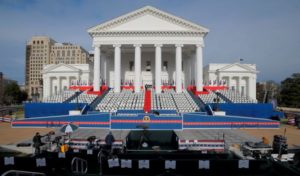
Combining better analysis with more meaningful participation will improve policy decisions.
I have spent much of my career thinking about cost-benefit analysis and the role that it plays in regulatory decisions. The debate over cost-benefit analysis is quite polarized. Advocates feel that agencies that are required to conduct such analyses of their regulations do so in a cursory manner, aiming to achieve only minimal compliance. By contrast, critics of cost-benefit analysis feel that the technique is hopelessly biased against regulatory initiatives, and that it is intended to make it harder for government agencies to issue policies that protect public health.
This debate over the propriety of policy analysis is not limited to cost-benefit analysis. Indeed, the debate surrounding environmental impact assessments—that is, statements that agencies must prepare assessing the anticipated environmental impact of government-funded or approved projects—strikes me as remarkably similar, with one key difference. Here, it is those groups that advocate for the protection of the environment that feel that agencies are violating the spirit of the environmental impact assessment requirement by complying merely with the letter—but not with the intent—of the legal requirements for analysis. And advocates of such causes as the Keystone Pipeline and genetically modified foods characterize mandated environmental impact assessments as a tool to obstruct government decisions and encourage litigation.
In my new book, Analysis and Public Policy: Successes, Failures, and Directions for Reform, I look at these various types of analyses, including cost benefit analysis, environmental impact assessment, risk assessment, and impact analysis. The book is my attempt to offer a clearer understanding of when analytical requirements, such as cost benefit analysis and environmental impact assessment, work to influence policy, and when they fail to do so. From these successes and failures, I believe that we can learn about the imposition of analytical requirements on policymaking. The question is not an abstract one: both Congress and state legislatures are considering imposing on executive branch agencies many new requirements for conducting policy analysis.
In researching this question, I spoke with 48 analysts who have collectively conducted or reviewed thousands of analyses. They work (or have worked) at the highest levels of dozens of federal agencies. I asked about their experiences: when did policymakers listen to them, and when were they ignored? In addition, with respect to cost-benefit analysis, environmental impact assessment, and risk assessment, I developed case studies of both those analyses that had a clear impact on a policy decision, as well as those analyses that clearly failed to do so, or led to extreme delays in decisions. Finally, I observed a panel conducted under a uniquely constructed analytical requirement, the Small Business Regulatory Enforcement Flexibility Act.
I came away from my research with some telling observations. For one, there are striking similarities among different types of analyses. In particular, the roles that different governmental and nongovernmental institutions play in influencing policy decisions are crucial. Analysis is clearly influenced by politics, though rarely in the predicted way. Throughout my research, I found no instances of politicians telling analysts to come up with particular answers to policy questions. Rather, politics plays a role by determining the amount of leeway that analysts have to influence decisions. The higher the political salience of an issue, the more difficult it is for analysts to break through and be heard.
The legal construction of analytical requirements is also essential to the role analysis plays in policymaking. The law can preclude the use of analysis by statutorily requiring the choice of a particular solution to a policy problem. It can also set the terms by which an analysis is conducted by specifying which factors analysts can consider, or by restricting the time for agency officials to render a decision. Bureaucracy is also a key factor. In particular, the degree of independence that analysts possess within their organizations is often crucial to their ability to make a difference. Finally, analyses’ inherent limitations can be used to prolong a decision or to justify a decision made on non-analytical grounds.
What do these factors mean for choices about the design and imposition of analytical requirements on regulatory decision-making and other forms of policymaking? I suggest that we neither abandon nor blindly embrace analysis as an answer to our policymaking challenges. We must view analysis as a tool for assisting with decision-making, rather than as a mechanism for getting the “right answer.” Those of us who teach economics, risk assessment, or policy analysis can lead the way in this enterprise.
I also propose a number of reforms that may enable analytical requirements to play a more effective role in governmental decisions. I suggest that legislators and executives who impose analytic requirements on policymaking should provide a more conscious melding of analytical and participation requirements. An example would be the review process called for under the Small Business Regulatory Enforcement Flexibility Act process, but this approach could be extended more generally and not used just to serve special constituencies, like small business.
Furthermore, bureaucracies should be structured to give analysts a more independent voice in their agencies. I recommend imposing deadlines on decisions, which can be an antidote to a process that sometimes stretches out over decades. In addition, as Chris Carrigan and I have suggested elsewhere, the use of analyses that are simpler but performed earlier on in the policy process have the potential to make analysis both more accessible and more influential.
Debates over the role of analysis in public policy date back decades. Indeed, some might argue that they even extend back to Plato’s discussions of the role of expertise in democracy. Too often, though, today’s warring camps talk past each other, and the ultimate losers are all those who would benefit from improved policymaking. It is my hope that this work can contribute to thinking more clearly about analysis in democratic policymaking and can help make analysis serve better as a tool for improving policy decisions.




